Karen Dyer, vice president for advancement and strategic initiatives
Facility #04104, otherwise known as the Conservatory of Music, has a little-known history. It was one of six designated fallout shelters on campus beginning in 1962.
For a decade, people have told me that the space below the auditorium in the Conservatory was a bomb shelter. And, I admit, I have told other people it was a bomb shelter as evidence of this existed in random civil defense items scattered throughout the basement – unopened biscuit tins and empty water barrels stamped with the Civil Defense information.
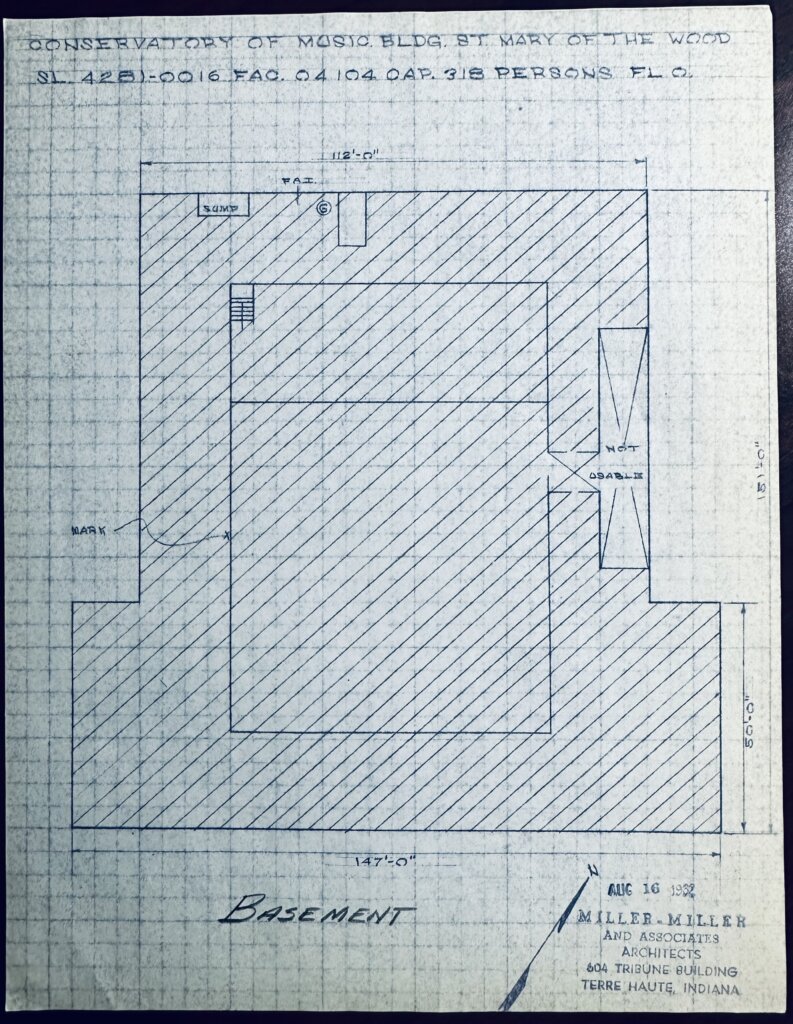
However, I wanted to learn more about how it became a shelter and why we still have so many tins of biscuits. So, I put on my researcher hat and went looking for information on the Civil Defense Program at Saint Mary-of-the-Woods College in preparation for an upcoming public historical tour of the building.
What I found was a fascinating intersection of world and United States history and the design of a national defense structure that incorporated colleges and universities throughout the nation – including SMWC. The Saint Mary-of-the-Woods Archives has a file of documents on the Civil Defense procedures for the campus, including a list of how the campus would be organized and where each fallout shelter would be located.
And, here, I had been calling it a bomb shelter! The primary purpose was to protect people from nuclear fallout in the event of an attack during the Cold War era.
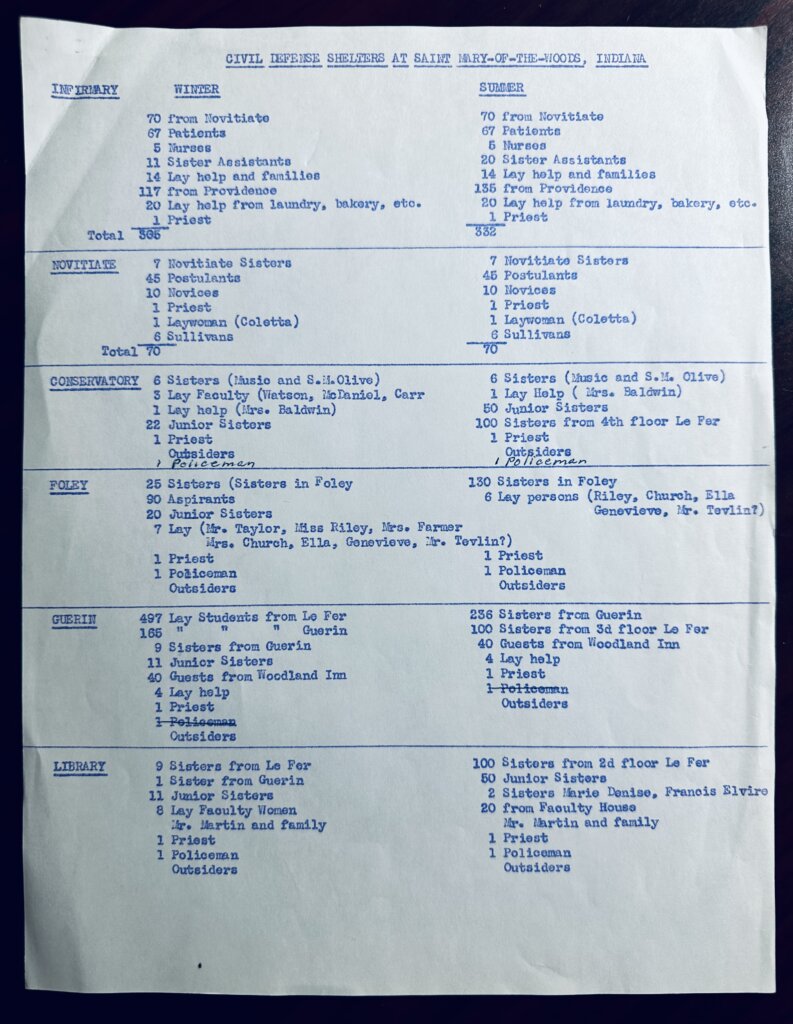
The Conservatory, Guerin Hall and Rooney Library at the College, along with the Sisters of Providence’s Foley Hall, the Novitiate (St. Mary’s Senior Living), and the Infirmary (Lourdes Hall), were all designated and secured by the local Civil Defense Program as structures to be utilized by the public as shelters for protection from fallout radiation in the event of enemy attack. Copies of blueprints in the archives show that Miller – Miller Associates Architects of Terre Haute drew and designated the shelter locations for each building.
The plans called for the general population of sisters and students to be divided into various buildings as specific sisters, faculty, a policeman and a priest each were assigned to oversee the operations by structure. Four of the six buildings would hold “outsiders,” which likely referred to the public.
Lists of supplies by building included biscuits, water storage drums, carbohydrate supplements (sugar water), sanitation kits (toilets and toilet paper) and medical kits. A supply invoice for the “new library,” designed in 1961 and opened in 1964, now called Rooney Library, shows enough supplies for 1,235 people. The library received 4,176 tins of biscuits made by the United Biscuit Company of America, each weighing 6 pounds, at the cost of 22 cents each for a total price of $918.72. These minimal supplies were meant to last for two weeks.
These supplies were stocked in public and private buildings, including colleges and universities throughout the United States, as part of its preparedness plan for nuclear attacks. Each designated shelter worked with the local civil defense officials to train teams to prepare and execute the shelter, keeping the supplies ready as part of the community fallout shelter program.
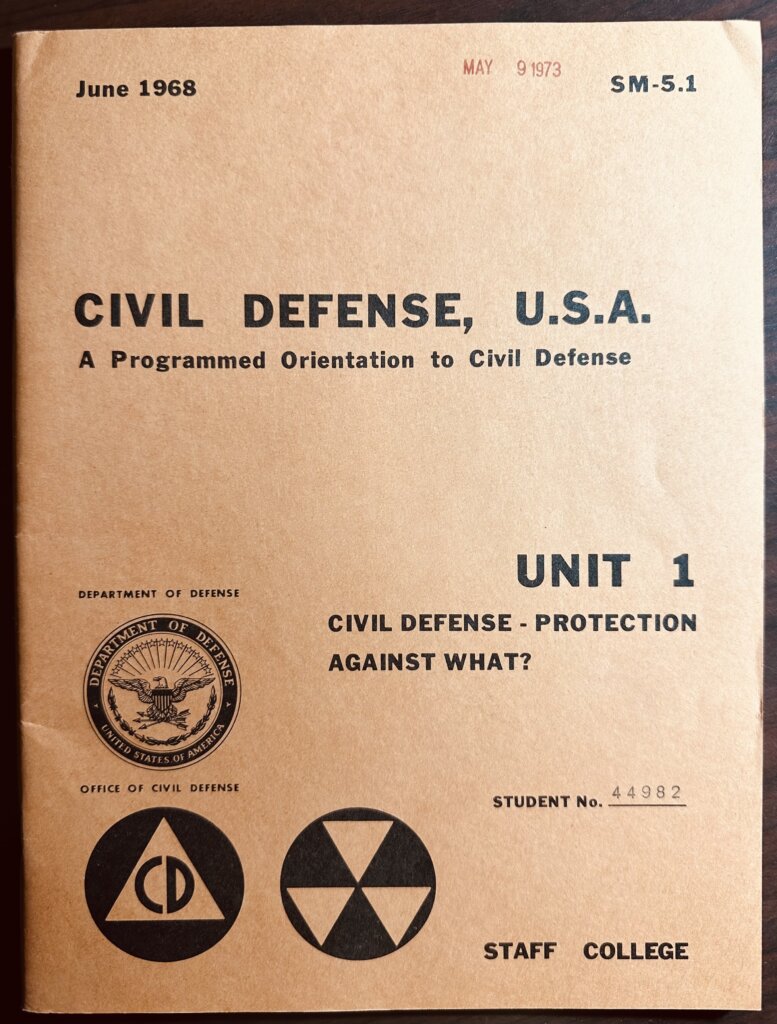
In 1961, President John F. Kennedy allocated $270 million from the federal government to outfit community fallout shelters throughout the US in public and private buildings, pushing for community shelters over family shelters due to the perceived racial and economic inequities of the latter. This move came in the wake of heightened geopolitical concerns and nuclear threats between the US and the United Soviet Socialist Republic (USSR), now Russia, following the Berlin Crisis, which would be compounded by the Soviet’s construction of the Berlin Wall later that same year and the Cuban Missel Crisis in October 1962, which many experts count as the closest the US has ever come to a nuclear exchange.
According to a Department of Defense booklet from 1968, the Office of Civil Defense was initially organized during World War II “to establish plans for the effective mobilization of civilians in the event of a direct attack on the United States.” This publication was designed as a training guide for college and university staff, and quoted, President George Washington as saying, “To be prepared for war is one of the most effectual means of preserving peace.”
Ultimately, the Civil Defense Program waned in the 1970s without shelters being utilized for their intended purpose, leaving supplies behind to become relics of the Cold War, even though Cold War fears would resurface in the 1980s during Ronald Regan’s presidency.
Today’s preparedness programs exist to “prepare for, respond to and recover from disaster,” according to the National Center for Disaster Preparedness at Columbia University, which brings together governmental and non-governmental groups and resources. Community sheltering globally remains central to today’s programming as natural disaster threats such as hurricanes, earthquakes and tornados, and political and human rights crises, including war, displace people from their homes and communities.
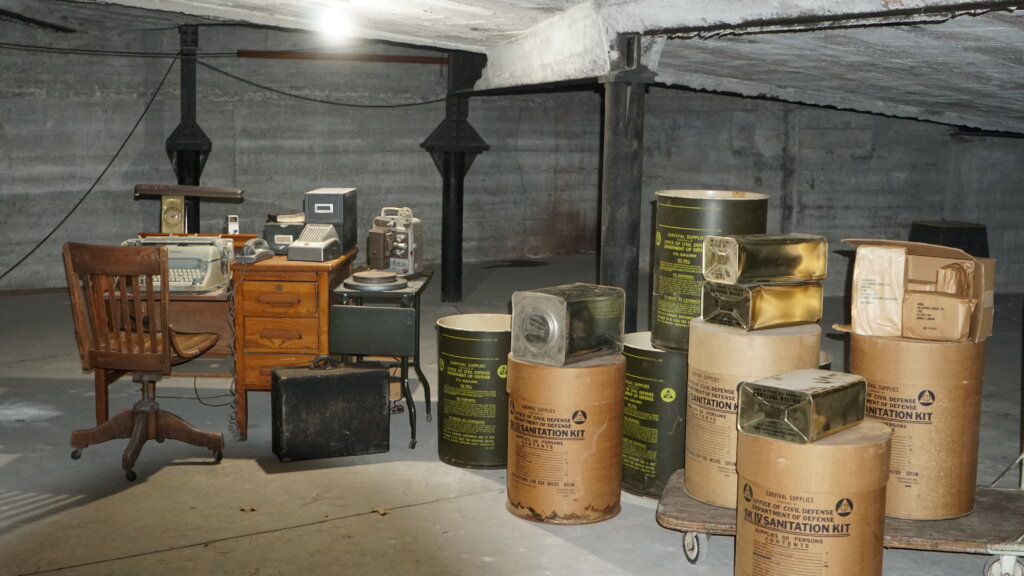
It’s been 61 years, and boxes of biscuit tins remain nestled in nooks and crannies throughout campus. Although these stale, unopened biscuits may seem like a leftover nuisance from the past, I see them as found treasure – a reminder of a significant campus and community collaboration during a time of great fear and uncertainty, when the nation planned together in prayer and preparation. It was an act of resilience during a time of ambiguity.
The Woods’ Civil Defense Program also reminds us that our time may not be so different from those who came before us. In thinking about the most recent global pandemic crisis, I am amazed by the parallels between the two eras, especially the sheer enormity of planning.
As the world shut down because of COVID-19, the College created a task force that met daily to make decisions, including such daily needs as feeding students sheltering on campus. The task force designated specific individuals as essential workers – who were allowed to go to campus, which included the security and facilities team. Today’s disaster preparedness for SMWC requires a business continuity plan with maintaining technology systems as a top priority – something that our predecessors did not have to consider.
The guiding advice during the 1960s was “duck and cover.” Today’s advice from Ready.gov is to “get inside, stay inside and stay tuned,” in the event of a radiation emergency which could be from an explosive attack, a power plant accident or a transportation accident.
Each 1960s sanitary station only included 8 rolls of Scott toilet paper. If we learned anything from the pandemic, every house and building should have more like a closet full of this necessary sheltering item!
It is also a reminder of our global geopolitical fragility with Russia’s invasion of Ukraine in 2022.
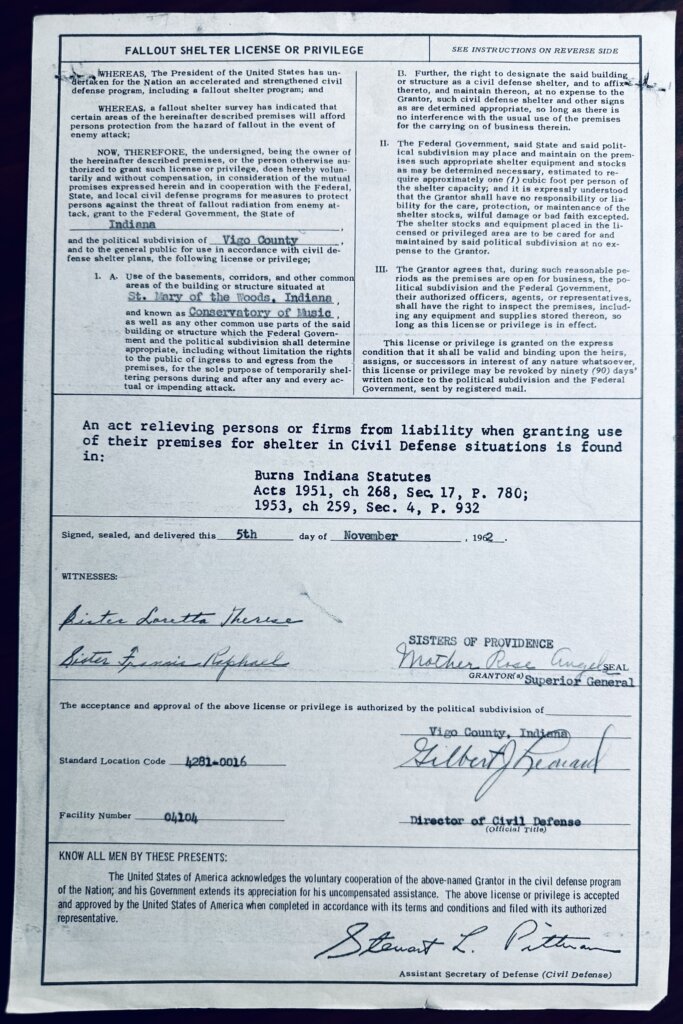
In January, the Science and Security Board of the Bulletin of the Atomic Scientist moved the world’s Doomsday Clock to 90 seconds from midnight for 2023 due in part to the war in Ukraine’s nuclear threat to humankind. This is the nearest it has ever been to midnight.
The clock was created in 1947 by the Science and Security Board as the world entered the nuclear arms race. Its initial setting was seven minutes to midnight, and it stands as a global symbol – a warning about the dangers of “technologies of our own making” that could destroy the planet.
When I graduated from college in 1991, it was the furthest from midnight in its history – set at the 17-minute mark. However, I clearly remember growing up with the fear of nuclear bombs during my formative years. Such popular media as James Brown’s song, Living in America, the theme song to Rocky IV (1985), and the threat of a Soviet invasion in the movie, Red Dawn (1984), or full-out nuclear war in The Day After (1983), helped to solidify these fears for me and others in the 1980s. Looking back, my fears were real, but I could not have even articulated what the Cold War actually was.
Today, as I stand in the Conservatory’s basement under the auditorium, I wonder what it would have been like to shelter in this space with only biscuits and sugar water to sustain hundreds of people in a cramped space with cardboard bucket toilets and four lightbulbs that may or may not have had a working generator to power them for weeks or longer.
I also wonder, as a student of global leadership, what impact can The Woods have today as we consider how our past influences our present and future – locally, nationally and globally.
Sidebar:
From the June 22, 1962, Guide for Community Fallout Shelter Management by the Department of Defense, Office of Civil Defense:
“Protection against blast, initial radiation and thermal effects at or near the point of burst of a nuclear weapon is very difficult. However, protection against the more widespread radiation effects due to fallout is feasible. A high degree of protection can be achieved by intelligent community planning and action. This guide is concerned with one phase of that activity, the management and operation of the individual community fallout shelter. Much pertinent information and knowledge relating to shelter management is available from experiences in World War II, from mass relief measures carried out following natural disasters and from a growing body of research concerned with shelter habitability and management.”
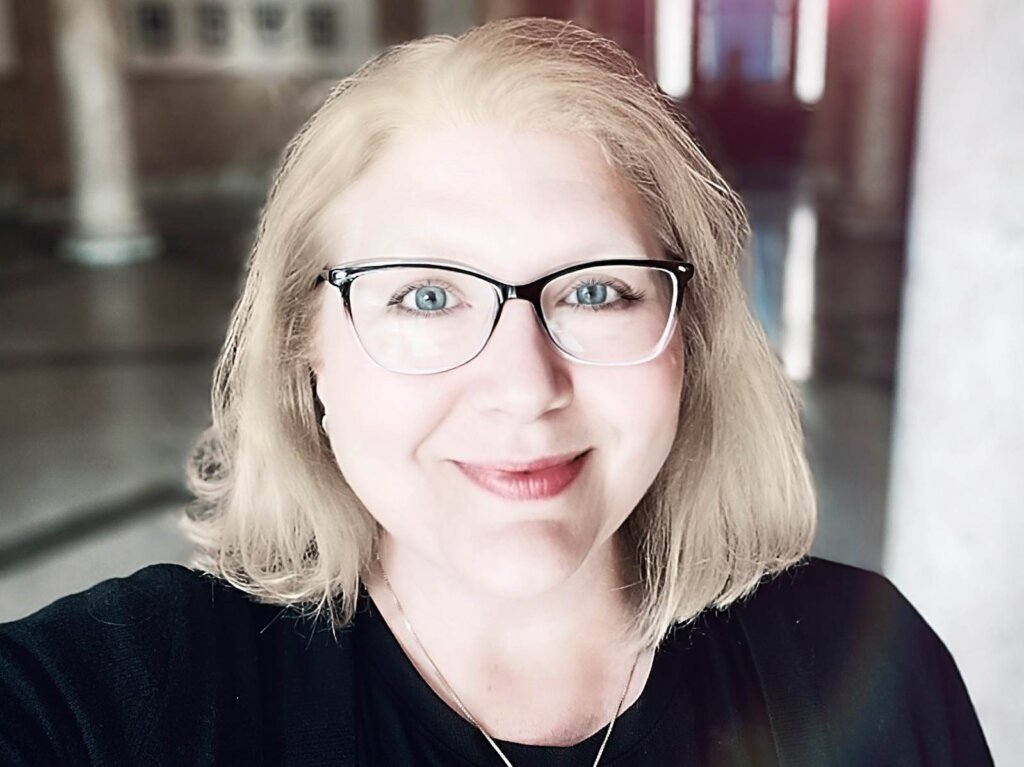
Working in the field of higher education fundraising since 1997, Karen Dyer has dedicated her career to supporting higher education – investing in change-makers, creative thinkers and leadership for students of all walks of life through a focus on studying, practicing and leading the art of fundraising. As the Vice President for Advancement and Strategic Initiatives at Saint Mary-of-the-Woods College, Dyer provides oversight for the fundraising, communications, marketing, events and alumni relations teams, while heading efforts for the SMWC Aspire Higher Strategic Plan. She enjoys writing and editing and is active in the Wabash Valley community, involved in the areas of strategic planning, fundraising and leadership and community development.

8 Comments